Chinese teahouses give a lot of tea lovers a romantic feeling. It is a good place to drink tea, see a nice opera, have a nice discussion, have group meetings, settle disagreements, get a pedicure, get your earwax picked, have a good fight one on one or group against group, end someones life, find a lady for a moment or as headquarters for your gangster inc. So, lets zoom in on the teahouses in the city Chengdu the capital of the once independent region Sichuan.
Why Chengdu?
Very simple: I can make things up or base my story on the information I have to my disposal. So my two books about tea in Chengdu helped me to make my choice. Luckily Chengdu is situated in Sichuan, the cradle of tea.
What books?
I have two books about teahouses in Chengdu. Coincidentally both published in 2008.
- Chen Jin, “Teahouse” (“Cha pu”, “Chaya”). This is a black and white photo-book. The author photographed the current teahouses in Chengdu, the way of live and activities that take place there. The text besides the photos is in Chinese…. But there is an English and an Japanese translation of these text at the end of the book, making it a trilingual book. The noticeable thing I missed in the book was a transliteration of the authors name. I had to go back to the webshop t find it…
- Di Wang, “The Teahouse: Small Business, Everyday Culture, and Public Politics in Chengdu, 1900-1950”. This is a scientific study into the economics, culture and politics in and surrounding the Chengdu teahouses in the period 1900 till 1950. That is from the Qing empire through the revolution, warlord period, Kuomintang, war of resistance (WWII) to the start of the People’s Republic of China. It contains less pictures than book one, but it proves that a picture might be worth more than a thousand words, but not every thousand words can be captured in a picture. It discusses the teahouse as a microcosm of society teaching a lot about culture and China in the first half of the previous century.
Most of what I tell below is based on the second book.
Teahouse business
In the beginning of the twentieth century starting a teahouse business was easy. You did not need a lot of money. Basically all you needed was a table, a few chairs and a roof. Besides whatever you needed to make tea of course. A lot of teahouses were family businesses, so cheap in wages. Extra money was earned by selling the excrements of the guests to local farmers.
Besides serving tea teahouses also provided other services like hot clean water for people in the neighbourhood, a toilet. But it also provided space for other people to work: peddlers, pedicures, earwax pickers. It provided a place to perform: singers, musicians and opera. A place to gather for groups, whether it be the local pigeon club, a labour union or a group of mobsters.
Teahouse life
One of the complaints that elite and government and tourists had on teahouse goers was that they were always at the teahouse. People spend a lot of time in tea houses if they were not working. They were poor and their houses small, so gathering of friends were usually done at teahouses, where the tea was cheap. Some stayed in the teahouse all day long.
As said people could get a services like earwax picking in the teahouse. But they could also use the teahouse as a place to find employment or employers. Both came to the teahouse and could speak to each other and having a job interview.
And often there was a performance in the teahouse. It could be a singer, story teller, musician, a complete opera or something that I did not mention but fitted. The Chinese theatre developed from the teahouses.
Furthermore teahouses were the places to get the latest news, make friends and have fun. In other words: to live life.
For everyone?
Yes the teahouse was a place for everyone to gather. Poor or rich, important or not. Within the walls of the teahouse (if it had walls) these differences were greatly reduced. Except for women of course. Tea is a men’s drink and women visiting teahouse came there for something much less respectable of course. That was the general opinion of course and this opinion changed over time. Women could be owner of the teahouse and over time women slowly became more welcome, especially because they attracted more male clients to the teahouse. During performances women and males were expected to sit separated and in some teahouses women had a separate entrance in a back alley for visiting a teahouse opera. And then they had to forget about the teahouse again because of a new law prohibiting women from entering tea houses…
Teahouses and government
Government and especially reformers did not like the teahouses. People were idling there and of course all kinds of “unhealthy” ideas could grow there. So during all those years government tried to control and limit the teahouses, with varying success. It became harder to start a tea business or to become a new owner of one. Shows were monitored and needed approval before being approved. An amount and kind of control that is still tried by the Chinese government today.
But it was not always successful. Either is was ignored by the teahouse owners or the teahouse guild. Or it was protested or it was done in such a way that they only seemed to work by the law. In all those years things slowly changed, but the teahouse was still the teahouse.
Teahouses were also the place where labour unions, guilds and criminal organizations held their meetings.
“Do not talk about national affairs” was on the walls of a lot of teahouses. Spies were all around…
Comparing to the west
At some places and at the end the author compares teahouses to their western equivalents: tavern, saloon, cafe’s, theater, places for gatherings of labour unions and clubs. In the west we had several places to choose from. In Chengdu people had only one choice for after work pleasure: the teahouse. It was the place to be, but with a more civilized drink.
The books
Unfortunately the more informative book stops in 1950. However, the last sentence contains a promise. I can’t wait for the sequel…
- Chen Jin, “Teahouse” (“Cha pu”, “Chaya”), 2008, Sichuang Fine Arts Publishing House (Purple Culture webshop, Worldcat)
- Di Wang, “The Teahouse: Small Business, Everyday Culture, and Public Politics in Chengdu, 1900-1950”, 2008, Stanford University Press (Amazon, Worldcat) (note: there is also a Chinese edition for those that want one)
And for those that want more: More pictures from the book by Chen Jin.
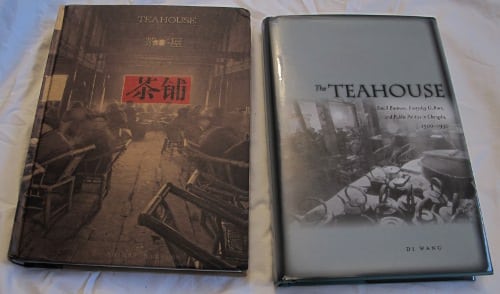
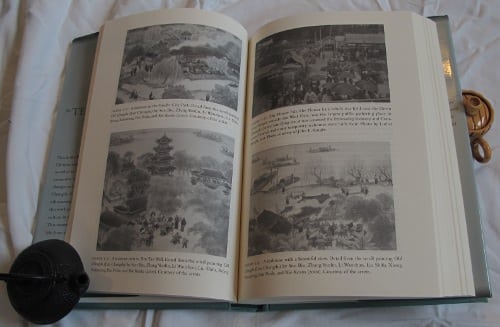

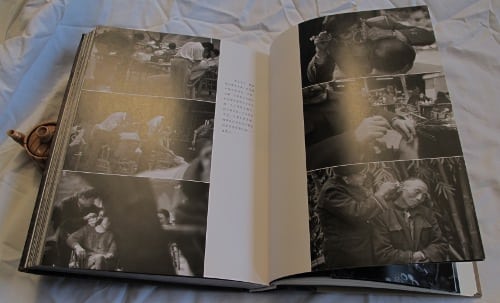


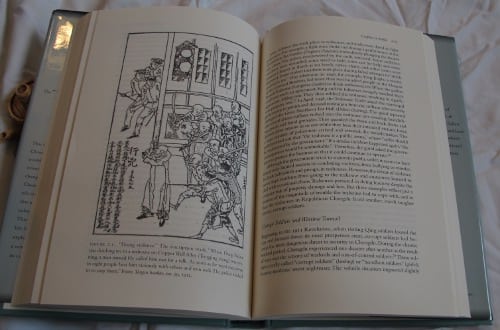
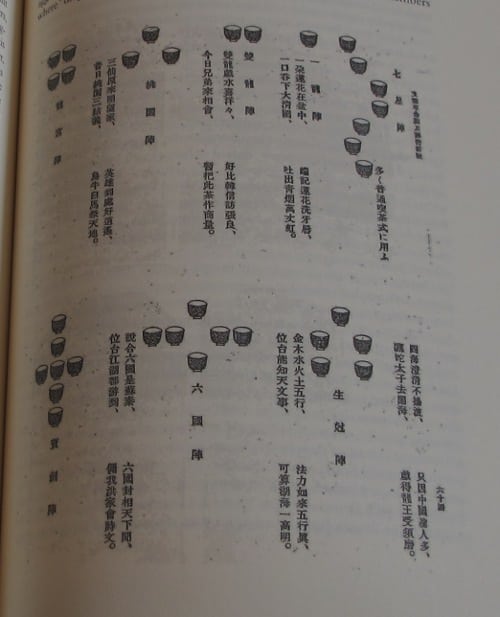

Really interesting post on a fascinating inside approach of the tea houses in China and how they were perceived.
It’s an interesting subject and yes it is good to read that teahouses are not always as peaceful as we dream them to be.
And a great title! 😉
Thanks 🙂